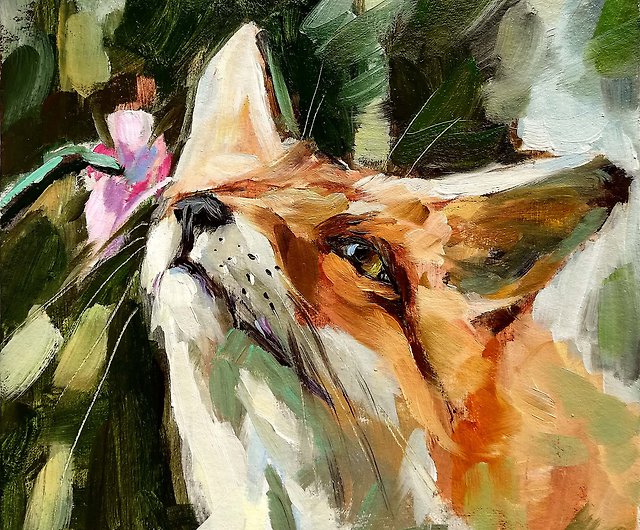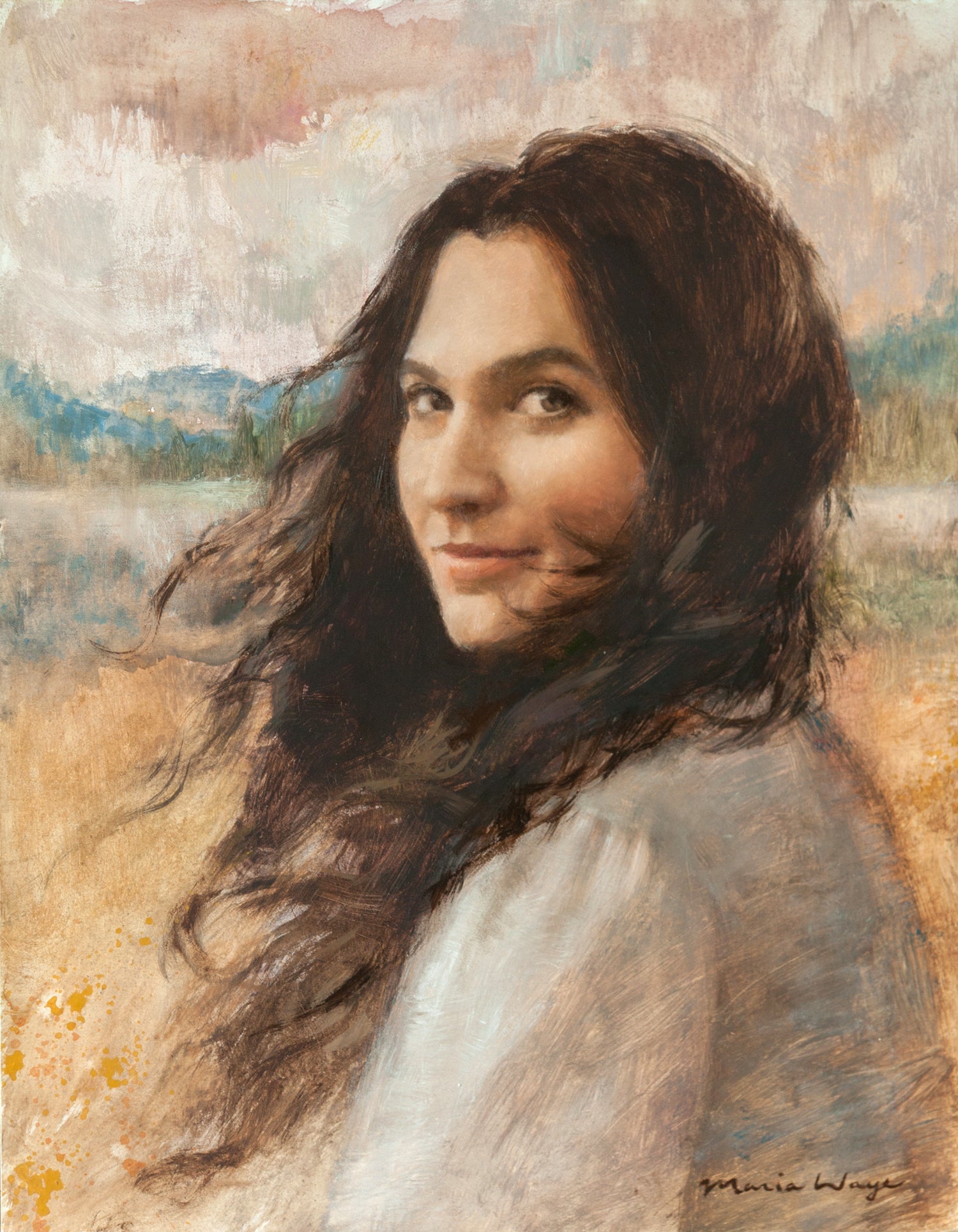Inspiring Design Inspirations with Oil Paintings for Sale
Checking out All About Oil Paints: An Overview to Understanding Their Charm and Worth
Oil paints have actually astounded audiences for centuries, providing a glimpse right into the artistic proficiency of various periods. Their abundant background is linked with cutting-edge strategies and extensive psychological expression. Understanding the products and methods behind these art work can enhance gratitude. Furthermore, the marketplace for oil paints provides chances for collectors and investors alike. As one explores this fascinating world, the question arises: what makes an oil painting genuinely important?
The Background of Oil Paint: A Trip Through Time
Oil painting has roots that date back to ancient times, it absolutely flourished throughout the Renaissance, when musicians uncovered its adaptability and abundant shade possibility. Early examples can be traced to the 7th century, with methods developing significantly throughout cultures. The medium came to be famous in Northern Europe in the 15th century, specifically via the works of artists like Jan van Eyck, who spearheaded its use for comprehensive realistic look and vibrant shades. This duration noted a departure from tempera paints, permitting higher deepness and texture. As oil paint spread, it influenced numerous artists, resulting in masterpieces by prominent figures such as Leonardo da Vinci and Rembrandt. The medium's tradition continues, shaping the art globe well into modern times.
Comprehending Oil Repaints: Products and Techniques
As musicians explore the globe of oil paints, they encounter a varied array of products and methods that specify this tool. The primary elements of oil paint consist of pigments, which supply color, and drying out oils, such as linseed, that bind the pigments and assist in application. Different additives can modify the paint's appearance and drying out time, enhancing flexibility. Methods like glazing, where clear layers are developed up, and impasto, which involves applying thick paint, permit for various aesthetic impacts. Additionally, the usage of brushes, scheme knives, and even fingers can develop distinct textures and coatings. Understanding these products and techniques allows musicians to completely reveal their imagination and attain the preferred effect in their artwork.
The Duty of Color in Oil Paintings
Shade plays a crucial role in oil paints, affecting both visual charm and emotional resonance. Comprehending shade theory fundamentals, including the connections in between colors, can enhance a musician's ability to communicate mood and atmosphere. Additionally, understanding shade mixing methods enables for higher depth and richness in a paint's palette.

Shade Theory Essential
Recognizing color concept is essential for artists dealing with oil paints, as it develops the structure for creating harmonious and aesthetically interesting structures. Color concept encompasses the research study of exactly how colors communicate, the color wheel, and the partnerships between primary, additional, and tertiary shades. Musicians utilize complementary colors to improve contrasts and produce centerpieces, while similar colors advertise unity and cohesiveness within a piece. In addition, the concepts of warm and awesome colors affect the perception of depth and area in a painting. Understanding these concepts enables musicians to control shade properly, guiding the customer's eye and communicating their desired message. Mastery of shade theory eventually enhances an artist's capability to convey emotions and ideas with their work.
Psychological Impact of Color
The psychological impact of color in oil paintings plays an important function in how viewers perceive and link with artwork. Shades evoke certain feelings and state of minds, influencing the visitor's psychological state. As an example, warm tones like oranges and reds can create a sense of heat and power, while awesome tones such as blues and greens frequently evoke peace or introspection. Artists purposefully select color schemes to boost narrative elements, leading the target market's psychological trip. The saturation and contrast of shades even more enhance these impacts, attracting focus and producing emphasis. Inevitably, the interplay of shades in oil paintings not only enhances their aesthetic appeal but likewise serves as an effective medium for emotional expression, enriching the customer's experience and analysis.
Color Mixing Techniques
While lots of aspects of oil painting contribute to the overall structure, mastering shade blending methods is essential for accomplishing desired impacts and depth. Shade blending can be approached via numerous approaches, consisting of the subtractive and additive processes. Additive mixing entails combining colors of light, while subtractive blending relies upon pigments, where colors mix to produce brand-new shades. Artists usually make use of a limited scheme to create unified works, comprehending the connections in between primary, secondary, and tertiary shades. Techniques such as glazing and scumbling additionally enhance depth and luminance. By skillfully blending shades, a musician can stimulate feelings, produce centerpieces, and attain a feeling of realism, eventually elevating the painting's visual and psychological effect.
Famous Oil Painters and Their Iconic Works

Renowned for their proficiency of shade and technique, oil painters have created several of the most celebrated art work in history. Popular artists like Vincent van Gogh captivated target markets with his emotive brushwork in "Starry Night," while Claude Monet's "Impression, Dawn" prepared for Impressionism. Leonardo da Vinci's "Mona Lisa" stays a long-lasting symbol of creative genius, showcasing his ability in catching human expression. Meanwhile, Rembrandt's "The Evening Watch" shows his cutting-edge usage of light and shadow. Various other noteworthy figures consist of Pablo Picasso, who revolutionized contemporary art with his vibrant trial and error in jobs here like "Les Demoiselles d'Avignon," and Georgia O'Keeffe, whose vibrant representations of landscapes and blossoms helped specify American innovation. Each musician's one-of-a-kind design added greatly to the oil paint landscape.
How to Evaluate the Quality of an Oil Paint
Evaluating the high quality of an oil paint includes a mindful evaluation of workmanship methods, as well as an analysis of color and make-up. Observing brushwork, layering, and the application of paint can expose the artist's ability level. Additionally, the interaction of colors and the general arrangement of components add significantly to the paint's aesthetic value.
Analyzing Craftsmanship Techniques
A precise assessment of craftsmanship techniques is essential for figuring out the quality of an oil painting. Critics should initially check out the application of paint; thick, distinctive brushstrokes may recommend a knowledgeable hand, while extremely uniform applications can show a lack of deepness. oil paintings for sale. The layering strategy is additionally crucial; the presence of lusters and differed thickness can enhance luminance and intricacy. In addition, the high quality of the materials made use of, such as the canvas and pigments, plays a significant function in toughness and total aesthetic. Focus to detail in components like sides and changes between colors reflects the musician's dedication to their craft. Eventually, these methods contribute to the painting's psychological impact and market price, working as indicators of the artist's skill and intent
Examining Color and Make-up
While assessing the high quality of an oil painting, one must concentrate on the interplay of color and composition, as these elements are basic to the art work's general influence. Shade options can develop and evoke feelings state of mind; as a result, the artist's scheme must be taken a look at for consistency and contrast. A well-balanced make-up directs the visitor's eye and creates a sense of unity. Musicians typically utilize methods like the rule of thirds or leading lines to boost aesthetic passion. Additionally, the usage of light and shadow can include deepness, boosting the three-dimensionality of the painting. Eventually, an effective oil paint weds color and structure, engaging the visitor and inviting a much deeper recognition of the musician's vision and method.
Taking care of and Preserving Oil Paintings
Proper care and preservation of oil paintings is crucial for keeping their honesty and durability. To protect these art work, it is crucial to present them away from straight sunlight, which can trigger fading and discoloration. Keeping a stable environment with regulated temperature and humidity further help in avoiding damages. Cleaning up need to be done delicately utilizing a soft, completely dry towel, avoiding any kind of rough chemicals that might harm the paint or varnish. Regular examinations for indicators of degeneration, such as flaking or splitting, are recommended. When moving or storing oil paints, correct extra padding and framework are necessary to prevent physical injury. Eventually, attentive care adds to the aesthetic allure and value of oil paintings over time.
The Market for Oil Paintings: Collecting and Spending
Recognizing the marketplace characteristics for oil paintings is vital for collectors and financiers alike. The worth of these artworks is affected by various aspects, consisting of the musician's track record, historical value, and current patterns. Collectors frequently look for pieces that resonate personally while considering potential gratitude in worth. Public auctions and galleries offer as primary places for trading, with rates fluctuating based on demand and rarity. Purchasing oil paints calls for research into the market, along with an understanding of authenticity and provenance. Additionally, emerging musicians may offer possibilities for significant returns, while developed names can command high prices. On the whole, a tactical method to accumulating can produce both visual enjoyment and economic incentives.

Regularly Asked Concerns
What Are the Ecological Effects of Oil Painting Materials?
The environmental influences of oil painting materials include the launch of volatile natural compounds (VOCs), harmful waste generation, and source extraction for pigments. These variables add to contamination and eco-friendly degradation, increasing worries amongst environmentally aware musicians and consumers.
Exactly How Do Various Canvases Influence Oil Painting Outcomes?
Various canvases affect oil paint results considerably. Surface, texture, and absorbency high quality can modify paint application, drying out times, and color vibrancy. Musicians commonly select certain canvases to accomplish wanted impacts and improve their creative expression.
Can Oil Paintings Be Brought Back if Harmed?
If harmed, Oil paintings can certainly be recovered. Expert conservators use various methods to repair rips, clean surfaces, and address staining, making certain that the artwork keeps its initial appeal and worth for future generations.
What Are the Signs of an Original Oil Paint?
The signs of an original oil paint consist of visible brush strokes, appearance variations, and an unequal canvas weave (oil paintings for sale). In addition, authenticity might be confirmed via provenance, signatures, and the presence of a varnish layer distinct to oil tools
Just How Has Modern Technology Influenced Modern Oil Painting Techniques?
Technology has significantly influenced modern-day oil painting strategies by presenting digital tools for planning, boosted products for appearance and long life, and on the internet platforms for selling and sharing art, therefore expanding artists' creative opportunities and audience reach. Oil paint has roots that date back to old times, it really grew throughout the Renaissance, when musicians found its versatility and abundant shade possibility. The psychological influence of shade in oil paintings plays a critical role in just how visitors regard and link with art work. While numerous elements of oil paint add to the general composition, mastering shade blending strategies is important for accomplishing desired effects and depth. Evaluating the quality of an oil paint includes a careful evaluation of workmanship techniques, as well as an evaluation of shade and composition. While examining the top quality of an oil paint, one have to concentrate on the interaction of color and make-up, as these aspects are fundamental to the artwork's total influence.